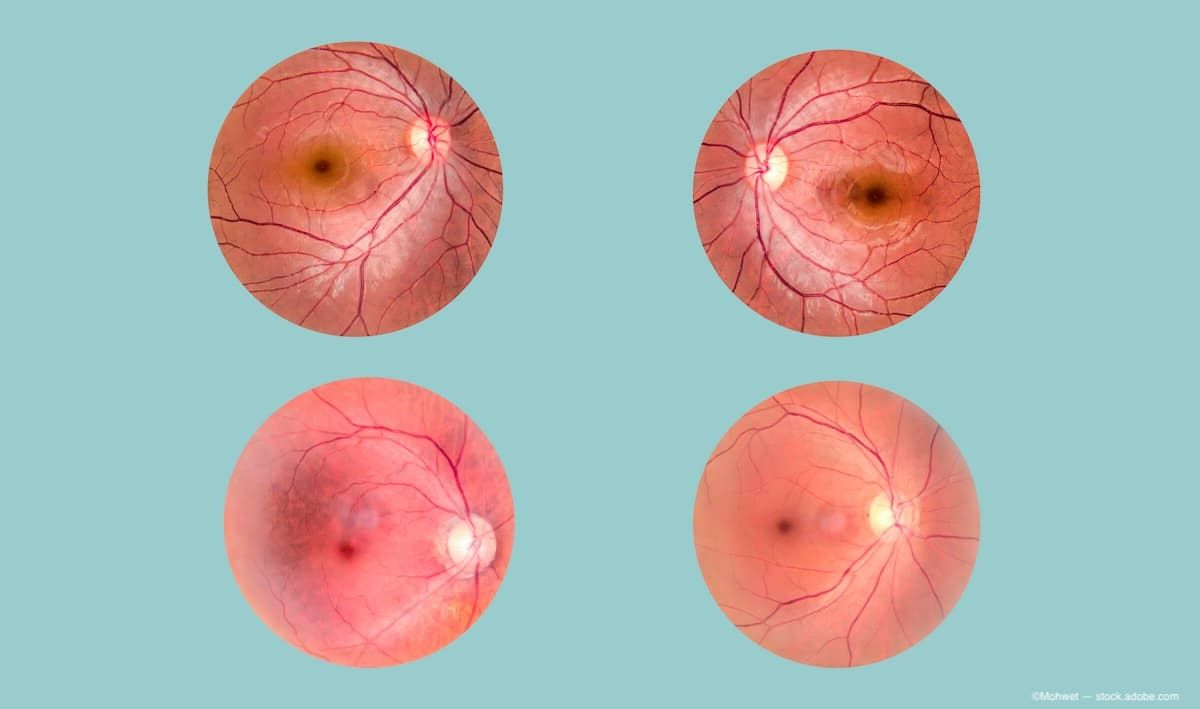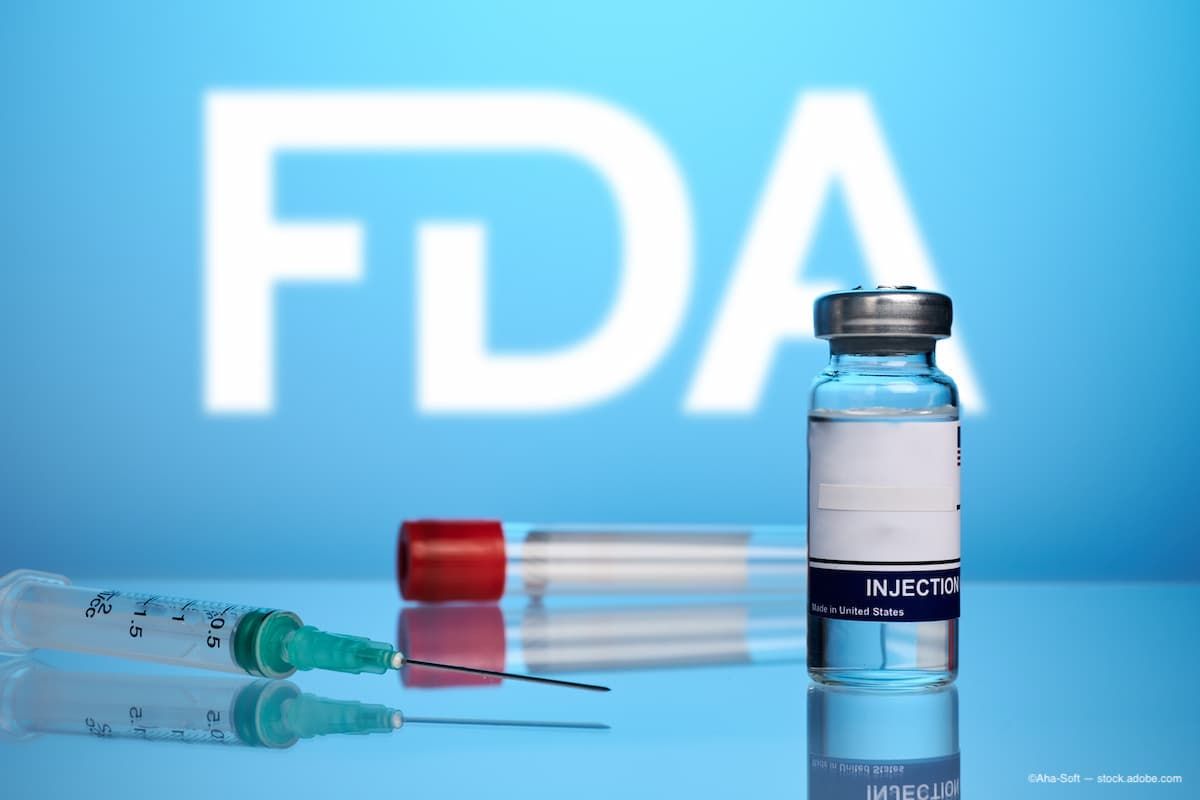News
Article
Retina Society 2024: Aura Biosciences reports positive Phase 2 end of study results evaluating AU-011 for early-stage choroidal melanoma
Author(s):
In a presentation at the Retina Society meeting in Lisbon, Portugal, Ivana Kim, MD, explained that AU-011 (Bel-Sar) demonstrated 80% tumor control rate, 90% visual acuity preservation, and a favorable safety profile.
(Image Credit: AdobeStock/tonefotografia)

Aura Biosciences Inc. announced positive Phase 2 end-of-study results evaluating AU-011 for the first-line treatment of early-stage choroidal melanoma (CM), a vision and life-threatening ocular cancer.
The results were presented at The Retina Society Annual Meeting in Lisbon, Portugal.
AU-011, an investigational, first-in-class targeted therapy, is in development for the treatment of primary ocular melanoma, a rare and life-threatening disease.
According to the company, its Phase 2 study (NCT04417530) is an open-label, ascending single and repeat dose escalation trial in patients who have been diagnosed with early-stage CM (small CM and indeterminate lesions). The study is designed to evaluate the safety, tolerability, and efficacy of up to 3 cycles of AU-011 treatment.
The trial also included both single and multiple ascending dose cohorts, with a total of 22 patients enrolled. Patients were closely monitored over a 12-month follow-up period to assess tumor control, visual acuity preservation, and tumor growth rate.1
Ivana Kim, MD, director of the Ocular Melanoma Center, Mass Eye and Ear / Harvard Medical School, presented results of the Phase 2 study at the Retina Society meeting.
“Many patients with early-stage choroidal melanoma currently face the difficult choice of whether to treat the cancer and risk losing their vision in the treated eye, or delay treatment and risk the tumor progressing,” Kim said. “The Phase 2 end-of-study data that I presented at The Retina Society Annual Meeting showed 80% tumor control rate, 90% vision preservation, and a highly favorable safety profile in early-stage CM. Bel-sar has the potential to become the first treatment that achieves the dual goals of treating the tumor while also preserving vision, which could change the treatment paradigm for patients with this disease.”
Tumor control and visual acuity preservation
According to the company, it Phase 2 results showed that AU-011 achieved an 80% tumor control rate (n = 8/10) among Phase 3-eligible patients who received the therapeutic regimen. There was complete cessation of growth following treatment among responders (post-treatment average growth rate of 0.011 mm/year among responders compared to 0.351 mm/year prior to study entry; p < 0.0001).1
Moreover, the company noted that visual acuity preservation was achieved in 90% of these 10 patients. Importantly, 80% of these 10 patients were at high risk for vision loss with tumors close to the fovea or optic disc, highlighting the potential for vision preservation with this novel class of drugs. Of note, the current standard of care is radiotherapy, which leads to visual acuity of < 20/200 (the cutoff for legal blindness) in the treated eye in up to 87% of patients.1
The Phase 2 results are a significant achievement considering the typically poor prognosis associated with choroidal melanoma, a rare and life-threatening ocular cancer, where there are no approved vision-preserving therapies to date.
Safety profile
The safety profile of AU-011 was highly favorable in all participants regardless of dose. There were no treatment-related serious adverse events (SAEs) reported. Ocular treatment-related AEs (TRAEs) were mild (Grade 1), included anterior chamber inflammation (18%) or cell (9%) and resolved without sequelae.1
The company noted that the majority (~70%) of the anterior chamber inflammation/cell events were self-limited, requiring no treatment, and resolved in a median of 6 days. For those events that did require treatment, topical steroid eye drops, administered for a median of 6 days, achieved complete resolution of the inflammation. Eye pain occurred in 9% of patients and was mild (Grade 1). Importantly, there were no treatment-related posterior inflammation events (no vitritis, choroiditis, retinitis, retinal pigment epithelium changes, or vasculitis) reported.
“We believe these Phase 2 results provide clinical evidence for bel-sar as a potential vision-sparing, first-line treatment option for patients with early-stage CM,” said Jill Hopkins, MD, chief medical officer and president of Research and Development at Aura Biosciences. “Bel-sar is potentially a first-in-class novel therapy and we are excited to continue to advance this program, which is currently enrolling patients in our ongoing global Phase 3 CoMpass trial.”
Aura also announced it has received written agreement from the FDA under a Special Protocol Assessment (SPA) for the design and planned analysis of the global Phase 3 CoMpass trial indicating concurrence by the FDA with the adequacy of the study, if successful, to address the objectives necessary to support Aura’s planned biologics license application submission.
Reference:
Biosciences A. Aura Biosciences Reports Positive Phase 2 End of Study Results Evaluating Bel-sar as a First-Line Treatment for Early-Stage Choroidal Melanoma. GlobeNewswire News Room. Published September 12, 2024. Accessed September 12, 2024. https://www.globenewswire.com/news-release/2024/09/12/2945023/0/en/Aura-Biosciences-Reports-Positive-Phase-2-End-of-Study-Results-Evaluating-Bel-sar-as-a-First-Line-Treatment-for-Early-Stage-Choroidal-Melanoma.html
Newsletter
Don’t miss out—get Ophthalmology Times updates on the latest clinical advancements and expert interviews, straight to your inbox.





